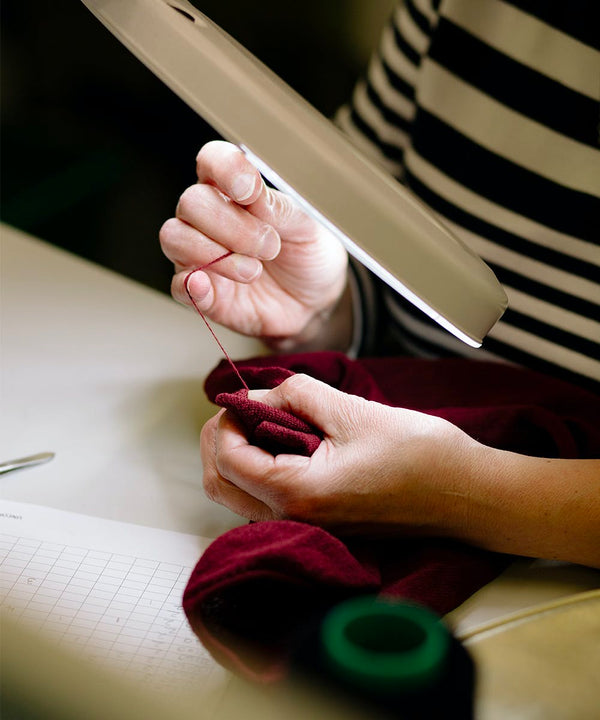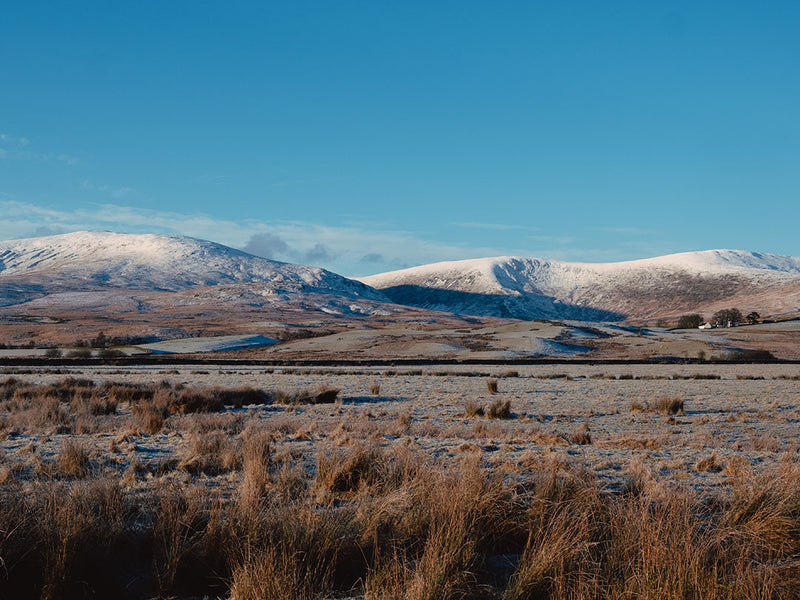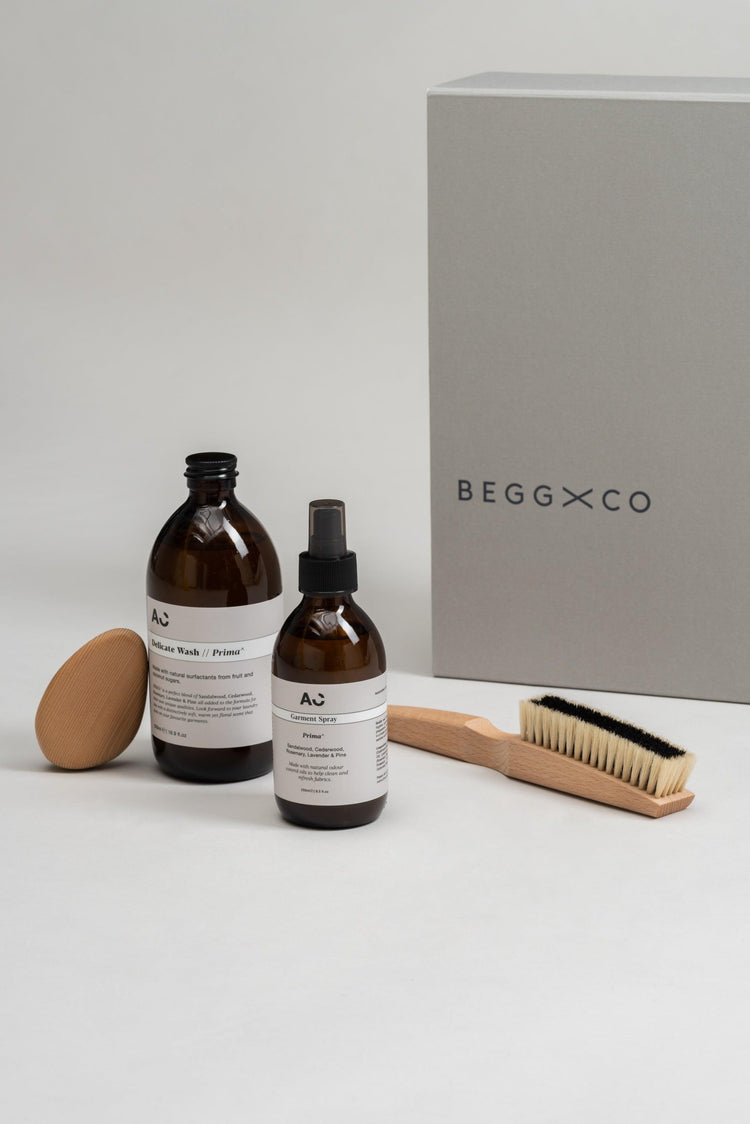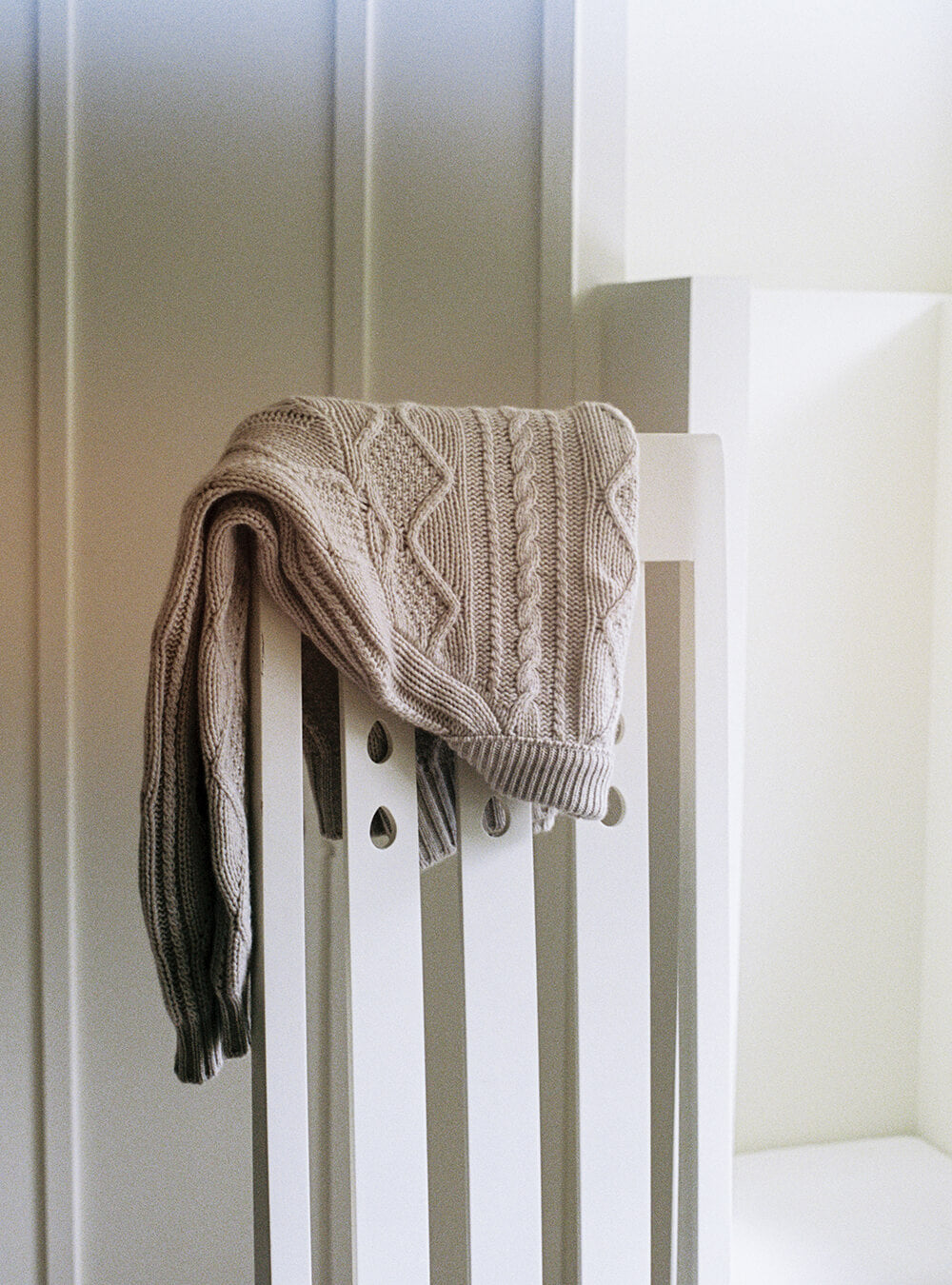What is Cashmere? - The Expert's Guide
- Sustainability
Discover the luxurious world of cashmere with our comprehensive guide. Learn about its origins, properties, and why it's a must-have in your wardrobe.
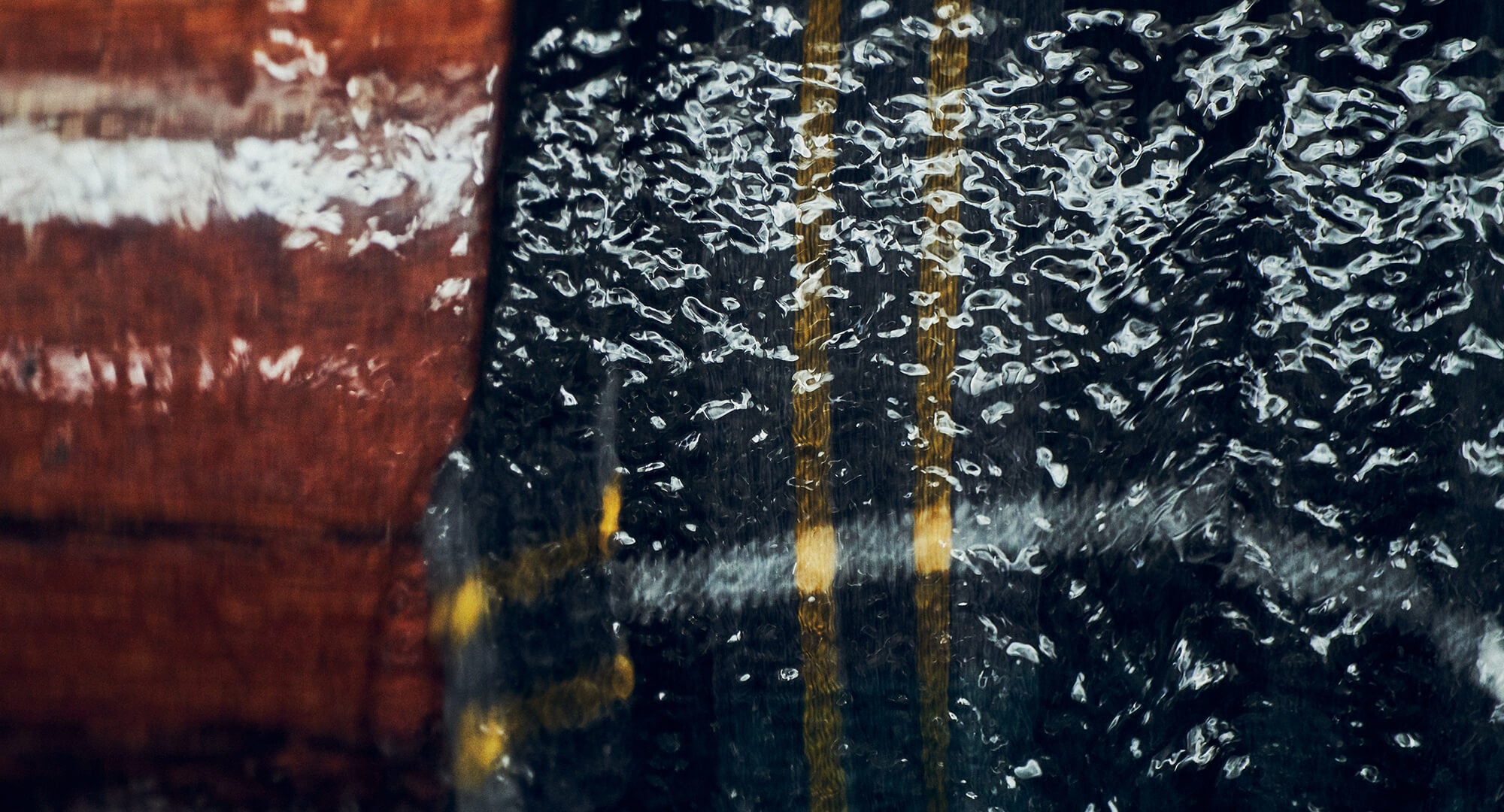
What is Cashmere?
Cashmere is a luxurious and highly sought-after natural fibre known for its softness and warmth. It is obtained from the goats of the Cashmere region, which encompasses parts of India, China, Mongolia, Afghanistan and Iran.
Due to its superior quality, cashmere is often associated with high-end fashion. It is used to make a wide range of products, including sweaters, scarves, gloves, hats, and blankets, which you can find in our range. Cashmere garments are warm and breathable, making them ideal for layering during colder months or for a cosy wrap on chilly evenings.
One notable characteristic of the fabric is its exceptional durability. With proper care, cashmere products can last for years, and their unparalleled quality makes them a timeless investment for those seeking both luxury and cosiness in their wardrobe. But what are the origins of this sought-after fabric?
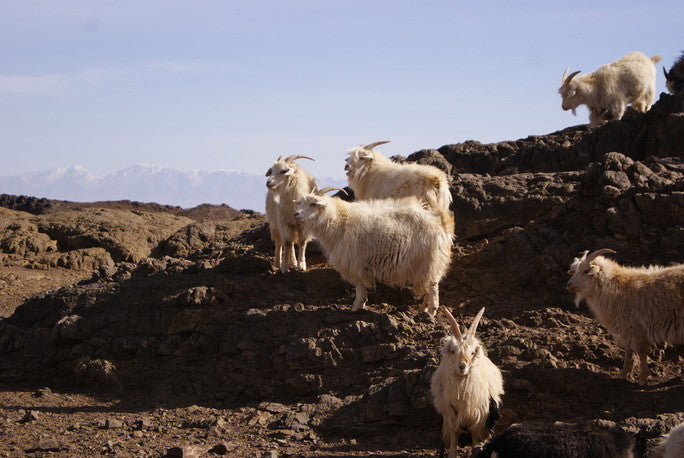
How is cashmere made?
The process of transforming cashmere fibre into fine garments involves several key stages:
1. Combing
The fibre is collected by combing (carefully brushing out the fine undercoat) cashmere goats. Combing is used as it helps preserve the longest and finest fibres, resulting in superior-quality cashmere. This process usually takes place in the spring when the goats begin shedding their winter coat.
2. Sorting and washing
Once collected, the raw fibre contains a mix of coarse outer guard hairs and the much finer undercoat fibres. Skilled workers carefully sort through the fibre by hand, separating the valuable soft fibres from the rougher guard hairs. The sorted fibres are then thoroughly washed to remove dirt, grease, and any remaining impurities.
3. Dehairing
The dehairing process removes any remaining coarse hairs that were missed during sorting. This is crucial as guard hairs can make the fabric feel rough and lower its value. Machines are used to separate the fine fibres, ensuring that only the softest and highest-quality cashmere remains.
4. Dyeing and carding
Before spinning, the dehaired cashmere can be dyed various colours. Natural cashmere comes in shades of white, grey, and brown, but it can be dyed into virtually any hue. Cashmere fibre is never bleached, as it would cause damage to the fibres.
The fibre then goes through a process called carding, which involves aligning the fibres into a uniform direction, preparing them for spinning.
5. Spinning
The prepared fibres are then spun into yarn using either traditional hand-spinning methods or modern industrial techniques. The finer the yarn, the softer and more luxurious the final fabric will be. Spinning also determines the thickness and strength of the yarn, which influences the warmth and durability of the finished product.
6. Knitting or weaving
The spun cashmere yarn is then either knitted into sweaters, scarves, and other garments, or woven into fine cashmere fabric for suits, coats, and shawls.
7. Finishing
Finally, the fabric undergoes finishing processes such as washing, milling, and brushing to enhance its softness and texture. High-end cashmere, such as that produced here at Begg x Co, is often handcrafted, ensuring precise attention to detail and impeccable softness.
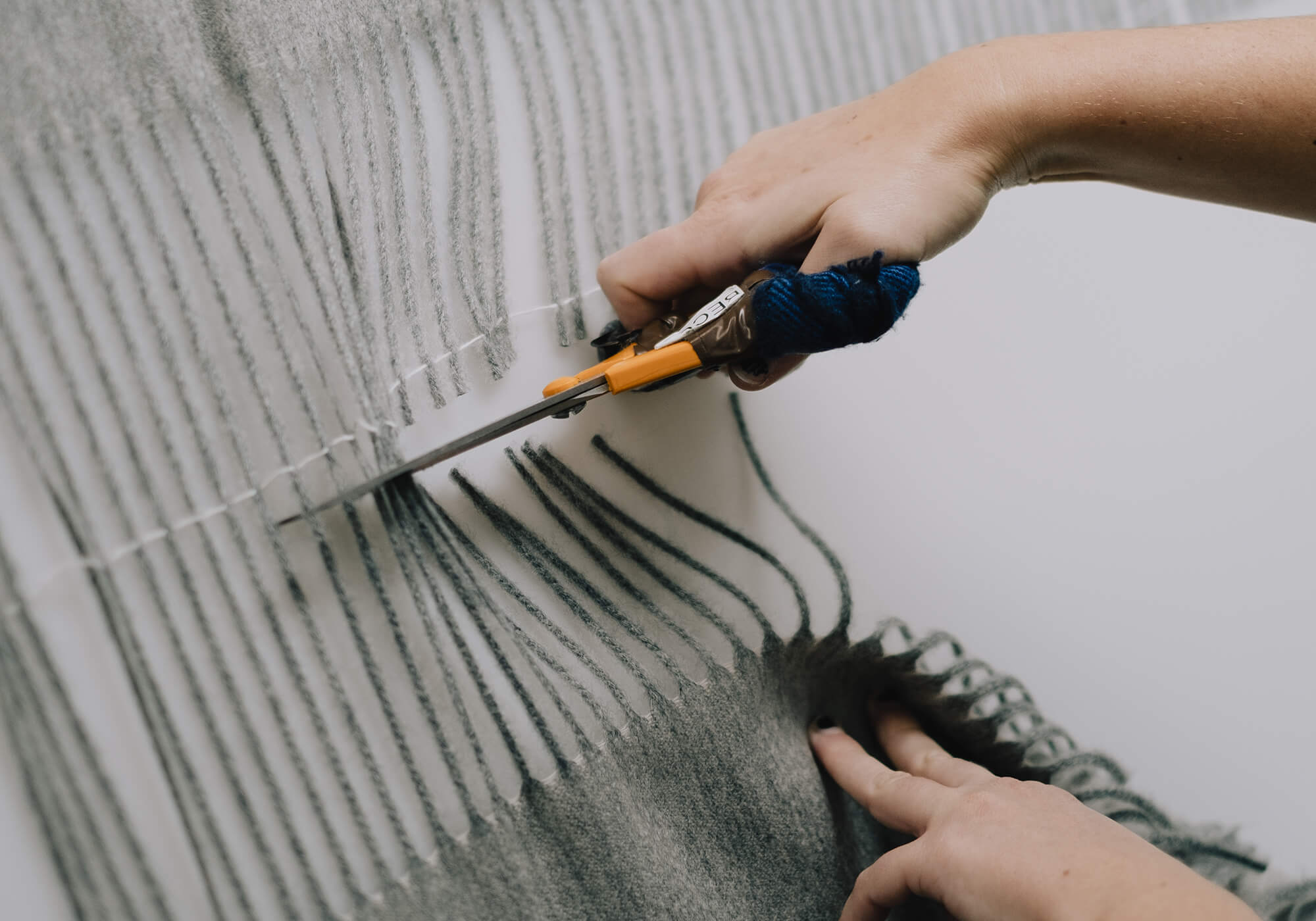
What are the benefits of using cashmere wool?
Cashmere wool offers several benefits that contribute to its status as a luxurious and highly sought-after material:
Exceptional softness and comfort
Cashmere is renowned for its unparalleled softness, making it one of the most comfortable fabrics in the world. Cashmere has an ultra-fine texture that feels smooth and gentle, avoiding feeling coarse or itchy against the skin. This makes it perfect for those with sensitive skin.
Superior warmth without bulk
Despite being incredibly lightweight, cashmere is incredibly warm. The fine fibres trap heat efficiently, providing excellent insulation without the need for bulky layers. This makes cashmere garments ideal for winter wear while still maintaining a sleek, elegant appearance.
Breathability and moisture-wicking properties
One of the benefits of cashmere is its breathability. It allows air to circulate, preventing overheating, making it comfortable to wear in various temperatures. Its moisture-wicking properties help to absorb and release perspiration, keeping you dry and comfortable throughout the day.
Durability and longevity
High-quality cashmere is incredibly durable and, with proper care, can last for decades. Unlike synthetic fabrics that degrade and release microplastics over time, cashmere retains its softness and structure, making it a long-term investment. Proper storage and gentle washing can help maintain its luxurious feel and prevent pilling.
Lightweight and versatile
Cashmere is lightweight yet strong, making it an excellent choice for travel and everyday wear. Its versatility allows it to be worn across different seasons and occasions. Whether in the form of a sweater, scarf, or lightweight shawl, cashmere adds a touch of elegance to any wardrobe.
Sustainable and natural
As a natural fibre, cashmere is biodegradable and more environmentally friendly compared to synthetic alternatives. When sourced responsibly, it can be a sustainable choice, as it is a naturally regenerative material
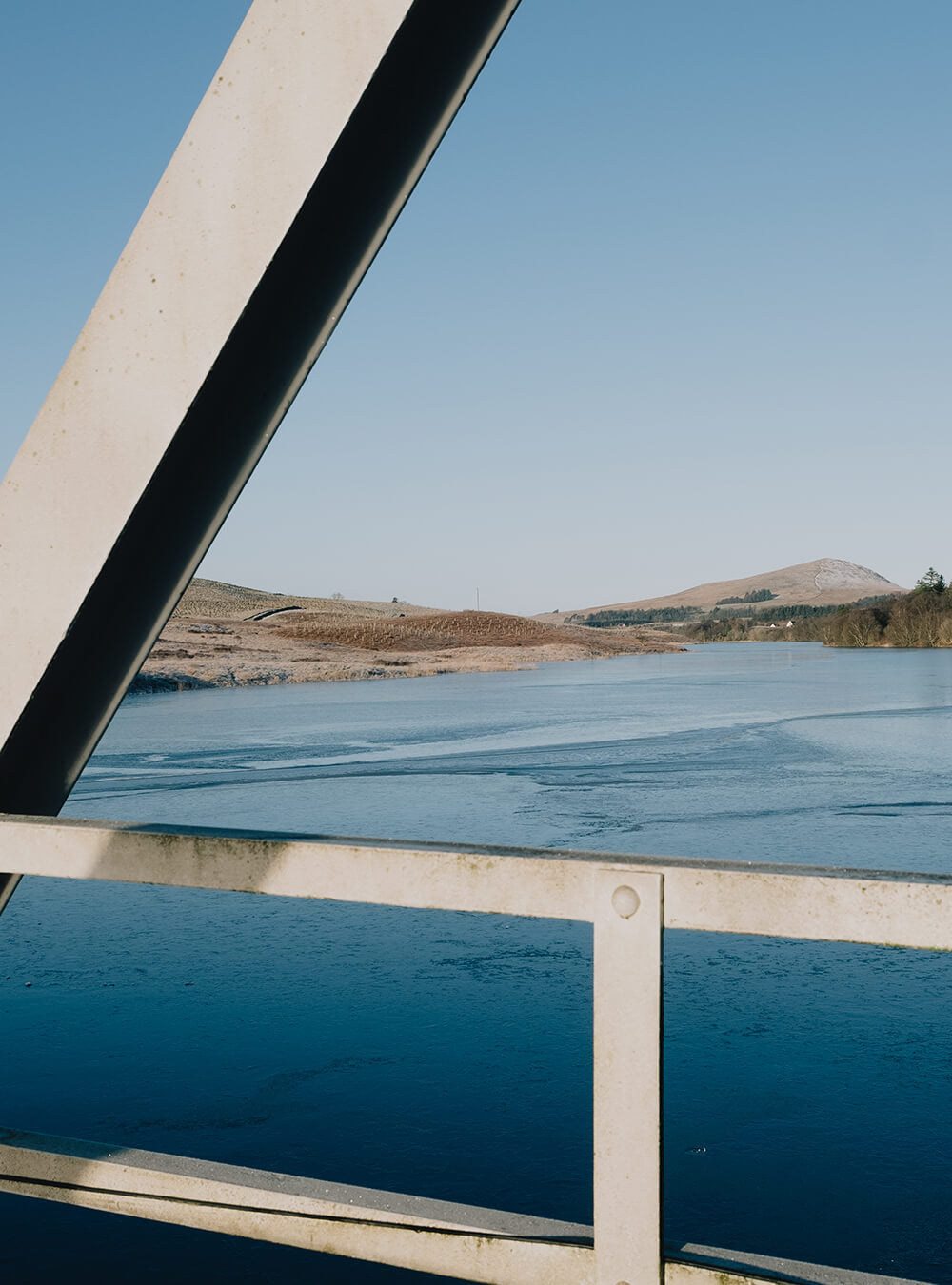
The history of cashmere
The journey of cashmere can be traced back thousands of years, beginning in the ancient region of Kashmir, which is nestled in the Himalayan mountains.
The production of cashmere began during the 3rd century BC, with the goat herders of Kashmir realising the incredible warmth and softness of the fibres shed by their herds of goats. These goats, known as Kashmir goats, are known for their ability to adapt to extreme climates and have developed a remarkable survival mechanism; a fine and insulating undercoat that protects them from freezing temperatures.
The cashmere goat's undercoat is where the magic happens. The fibres of the undercoat are soft and fine, making them perfect for the creation of delicate and luxurious fabrics. Some other wool fibres, such as most British wools, are coarse and thick, whereas cashmere fibres are incredibly fine and possess remarkable thermal insulation properties.
Early on, the production of cashmere was exclusively done by hand, where herders carefully combed the undercoat of goats during the moulting season. However, the demand for cashmere surged in the late 18th century, when cashmere shawls were introduced to Europe. This, along with the arrival of the Industrial Revolution and the advancement of technology, enabled an increase in textile production and change in production methods.
Today, the development of cashmere production remains an ongoing journey . The combination of traditional knowledge from nomadic herders, technological advancements, and evolving consumer demands has shaped an industry that continues to provide the world with exquisite and sought-after fibre.
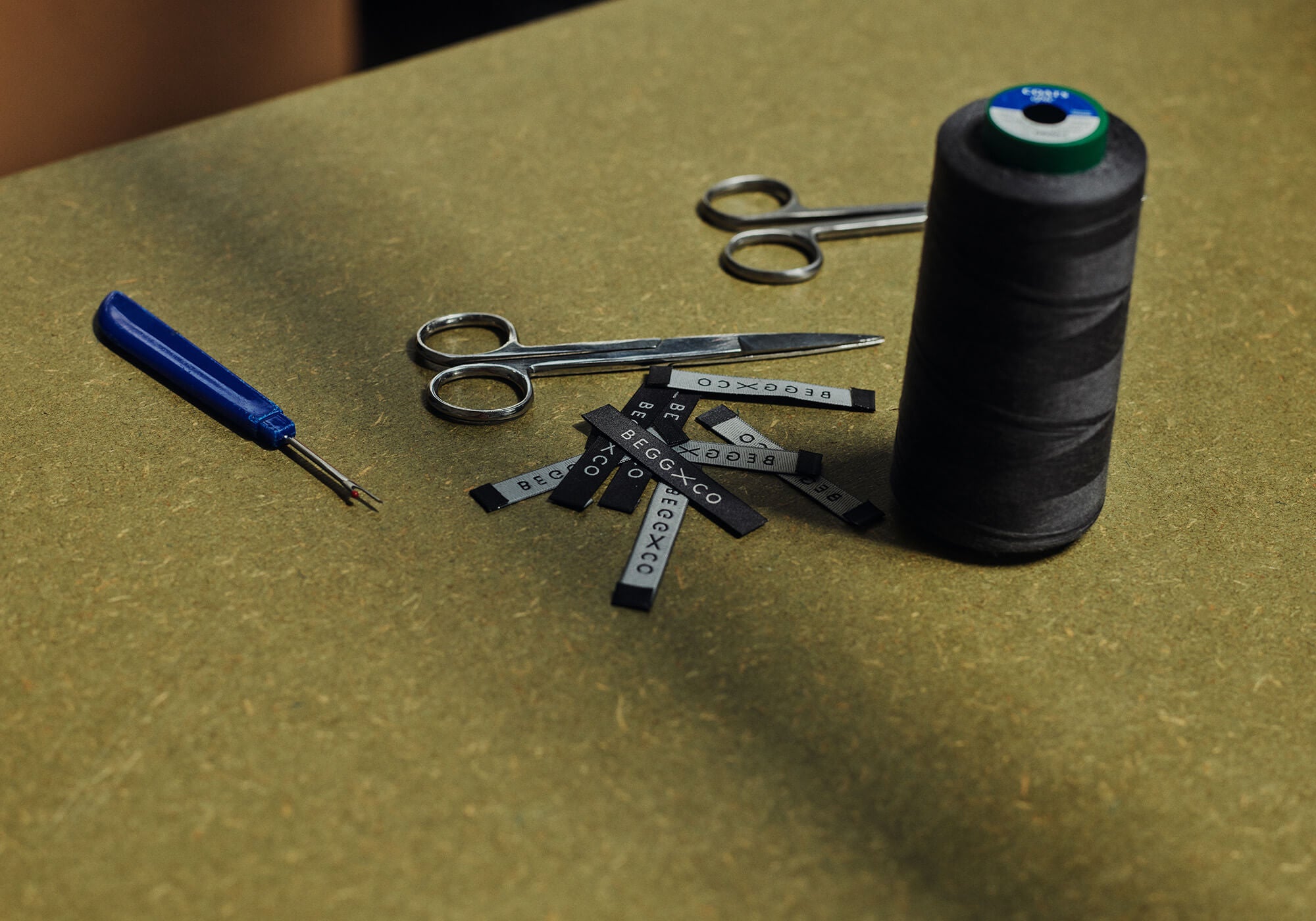
How to care for cashmere garments
While cashmere has been known for its durability throughout the centuries, there are still several actions needed to maintain the quality and longevity of cashmere pieces.
With that being said, here are some tips on how to care for cashmere garments in your wardrobe.
1. Follow the product’s washing recommendations
Start by reading the care label on each piece. Different items may have specific instructions for washing, drying, and storing. Follow these guidelines carefully to ensure that your cashmere retains its softness and shape.
2. Hand wash your cashmere products
When it comes to washing cashmere, hand-washing is typically the best method. Use a mild detergent or specially formulated cashmere wash and lukewarm water.
3. Avoid using harsh chemicals
Avoid using harsh chemicals or bleach when washing cashmere, as they can damage the delicate fibres. If you prefer machine-washing, use a gentle cycle and place your cashmere garment in a mesh laundry bag to protect it from snagging or stretching.
4. Lay flat
After washing, lay your cashmere garment flat on a clean towel to air dry. Avoid hanging it up, as this can cause the fabric to stretch out of shape. Reshape the garment gently while it's still damp to maintain its original fit.
5. Invest in a cashmere comb
To prevent pilling, which is common with cashmere due to the fine fibres rubbing together, consider investing in a cashmere comb or sweater stone to remove any pills that may form. Gently brush the fabric in one direction to smooth out the surface and keep your garment looking new.
6. Storing your cashmere clothing
When storing your cashmere garments, fold them neatly and place them in a breathable storage bag or box. Avoid hanging them for long periods, as this can cause stretching and distortion. To protect your cashmere garments from moths and other pests, consider using cedar blocks or lavender sachets in your storage area.
By following these simple care tips, you can ensure that your cashmere garments remain soft, luxurious, and long-lasting.
Why choose Begg x Co cashmere?
Cashmere from Begg x Co offers a blend of traditional Scottish craftsmanship and contemporary design, with a commitment to responsible production practices.
Heritage and craftsmanship
At Begg x Co, we design and manufacture cashmere knitwear, accessories, and homeware for the modern lifestyle, with mills in Ayr on the west coast of Scotland and Hawick, known as 'The Home of Cashmere', in the Scottish Borders.
Innovative design and quality
We’re renowned for own innovative approach to cashmere, blending traditional techniques with modern design. Our iconic Wispy scarf, for instance, is crafted from superfine cashmere using patented spinning techniques unique to the brand, resulting in unparalleled softness and durability.
Sustainability and responsibility
We are committed to responsible crafting, ensuring that our cashmere products are made with consideration for both the environment and the communities involved in their production.
A wide range of luxury products
We offer a diverse range of products, including women's and men's cashmere clothing, accessories, and homeware. Each item is designed to embody refined style and comfort, making them timeless additions to any wardrobe or home.
By choosing Begg x Co, you are investing in products that reflect a rich heritage, innovative design, and a commitment to responsibility, ensuring that your cashmere pieces are both luxurious and responsibly crafted.
Shop our luxury cashmere collection today.

